Frightfest Guide to Mad Doctor Movies, released by FAB Press, is a brilliantly insightful and colourful exploration of the mad doctor horror genre. It’s a must-read for all horror film fans. DAVID SAUNDERSON interviews author Dr John L Probert about his bloody dissection of the mad doctor tradition.
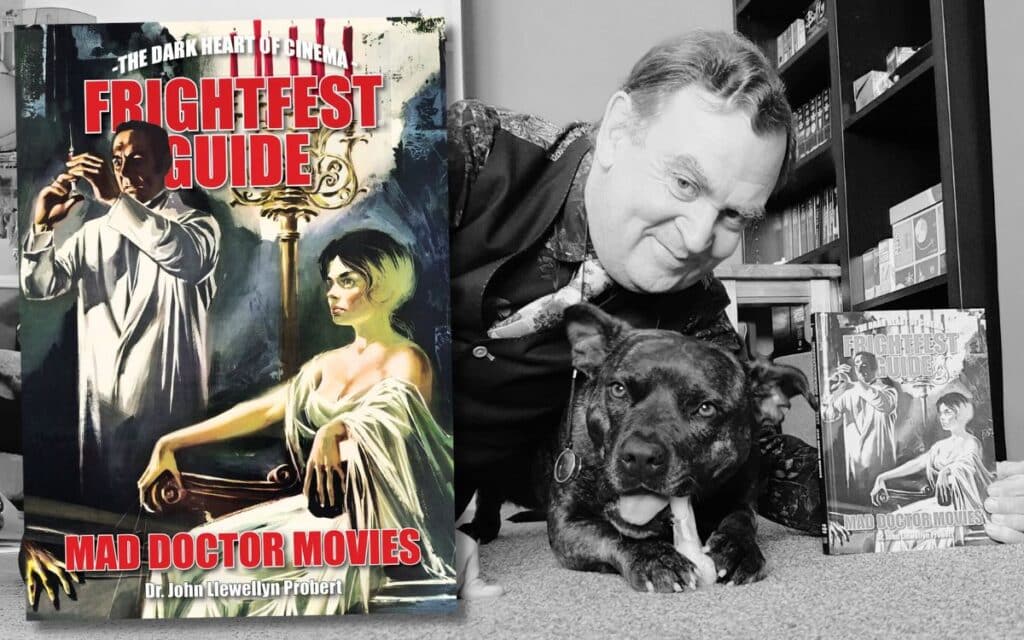
Frightfest Guide To Mad Doctor Movies Interview
SPOOKY ISLES: Hi John, thanks for talking to us today. When one thinks of Mad Scientists in film, the first characters that come to mind are Doctor Frankenstein and Dr Jekyll. But looking at your book, it’s so obvious that there are just so many insane doctors and scientists in horror films. A lot of the names were famous – from Hannibal Lecter and D. Fu Manchu to Dr Phibes, along with the zillions of Boris Karloff mad scientist films. Even if they’re not actually working as a doctor or a scientist, they are the villain in some way. It seems like most horror films feature psycho scientists or doctors!
JOHN LLEWELLYN PROBERT: Oh yes, there are certainly a lot of them! When I was researching the book more and more titles kept popping up. In fact Harvey Fenton, my publisher, kept encouraging me to dig further to unearth movies even die-hard enthusiasts might not have heard about, which is why I ended up including a number of Bollywood pictures like Kabrastan (1988), which is broadly based on Frankenstein, but has a dance sequence to Michael Jackson’s Thriller, or Rubber’s Lover (1996) a very strange cyberpunk film from Japan.
Your wonderful-looking book dives into the crazy narrative of medical madness in cinema. What was the spark that ignited your interest in exploring this particular theme?
Well it’s a bit of a long-winded story but here we go. I have a movie review website called House of Mortal Cinema (johnlprobert.blogspot.com) which has now been running for 12 years and has around 1100 reviews, all written by me. A few years ago I was contacted by a publisher who suggested I do a book of film reviews which would be lavishly illustrated and would be called House of Mortal Cinema: The Book, or something like that.
Anyway that all fell through which I was very sad about, because I grew up reading all those large format colourful books by Alan Frank and Denis Gifford, and later Phil Hardy’s wonderful Aurum Film Encyclopaedia, and it had always been a bit of a dream of mine to write something similar. Fast forward a few years and I was at Abertoir, the International Horror Film Festival of Wales and Harvey Fenton of Flesh and Blood Press had a stall there.
Amongst the gorgeous books on display (because FAB Press do produce the most beautiful publications) were the Frightfest Guides. I can’t remember if I approached him or if he said to me that he’d be interested in me doing one if I could come up with a subject that hadn’t been done, but I just could not let the opportunity to have a lovely big book of horror film reviews all written by me and illustrated throughout in full colour pass me by. So I went back to my hotel room, did a quick slow burn, and The Frightfest Guide to Mad Doctors was born!
Your journey from being inspired by The Fly and Frankenstein and the Monster from Hell as a child to becoming a real-life doctor and surgeon, and then critiquing mad doctor movies is quite intriguing. How do you think your medical background has shaped your perspective on the portrayal of medical madness in films?
A lot of horror, and a lot of horror cinema especially, deals with the extrapolation of ideas by taking them and developing them in an extreme way. Clive Barker’s Hellraiser is essentially a story about an extra-marital affair told with an eye on Greek tragedy and then ramped up to make it extreme. The Texas Chain Saw Massacre is about what happens when people are laid off the only work they know. Wes Craven’s early films are about ordinary suburban families pushed to the limit while the best of his later films are about the nature of storytelling itself, again all pushed to the limit.
So with my own medical background part of the joy of these movies is when they take a genuine medical concept, eg. treatments for failing organs, skin grafting, anger management techniques, or side effects of drugs, and then ask what would happen if something extreme happened as a result. In the cases above you’d get Shivers (1975), Rabid (1977), The Brood (1979) and Scanners (1981) which is the reason why David Cronenberg was one of my favourite film-makers when I was growing up. They’re all reviewed in the book, by the way.
In your book, you have an interesting blend of real-life surgical expertise meeting the fantastical world of cinema. Could you share some instances where you felt filmmakers got the medical details spot-on, and some where they veered off into pure fiction?
Well, there’s a section devoted to that very subject in the book so that’s the place to find out all about that! A recent film that I liked was The Autopsy of Jane Doe by Andre Øvredal which is a good mixture of both.
The systematic and logical way they work through the case is laudable, but film-makers do have this annoying obsession with having skin peeled away from tissue to reveal what looks like fine strings of goopy rubber solution between the two layers. In pizza advertising, it’s known as the ‘cheese pull’. It’s completely inaccurate but seems to have become popular with modern films-makers, although I appreciate they haven’t actually done that to real people as many times as I have.
Through your examination of more than 200 Mad Doctor films, you’ve shown a clear evolution of this trope. How do you think the portrayal of mad doctors and sinister medical practices in cinema has changed over time, perhaps mirroring societal shifts?
They certainly have and again, there’s a big section on that at the start of the book. It’s more a combination of societal attitudes and the advances that have been made. For example, if we hadn’t had Christiaan Barnard performing the world’s first heart transplant in 1964 then the world wouldn’t have had Night of the Bloody Apes in 1969.
What would you say are some key films that significantly contributed to the development and popularity of the mad doctor genre?
Off the top of my head I’d say Robert Wiene’s The Cabinet of Dr Caligari (1920) for so many reasons; James Whale’s Frankenstein (1931) – the sequel is arguably better but this was the first and represented a leap in cinematic horror storytelling even after Universal’s Dracula which came out the same year.
For kind of the same reasons I’d say Hammer’s the Curse of Frankenstein (1957) which revolutionised and revitalised the genre, completely changed the way horror films were made and put Britain in the map as a major player in horror cinema to the extent that legacy remains today.
Finally I’d pick the late Stuart Gordon’s Re-Animator (1985) which, despite appearing amongst a couple of other excellent pictures featuring the living dead, displayed an exuberance and originality all its own that again has lasted to this day. It’s significant to the lasting appeal of both that film and the director’s work in general that as I’m answering this question Flesh and Blood Press has a stall at Sheffield’s Celluloid Screams festival and Stuart Gordon’s memoirs are on sale – right next to The Frightfest Guide to Mad Doctors!
One of the things the older films don’t show is what the mad doctors are actually doing – like the torture of the House of Pain in The Island of Lost Souls and brain transplants of countless films. But having Tom Six – the director of the Human Centipede trilogy — write your foreword really puts to the forefront what ghastly monsters they really are. In your view, how are modern filmmakers approaching the “mad doctor” trope differently compared to their predecessors?
If you dig back through the pulp horror magazines of the 1930s you’ll find The Human Centipede is very much in the tradition of the horror stories of that era (The Mole Men Want Your Eyes, etc). The late John Pelan’s Dancing Tuatara Press reprinting a lot of those a few years ago and they are deliciously ghastly and outrageous.
So in a way Tom was carrying on a venerable tradition with his film, which he claimed was 100% medically accurate and I go into some detail as to whether it actually was or not in the book.
In many ways, in fact, the ‘mad doctor’ has remained something of a constant and it’s the world around them that has changed. Frankenstein gets updated every few years and there are some excellent new versions including one by Bernard Rose from 2015 and Larry Fessenden’s excellent 2019 Depraved. The mad doctor has even entered the MCU with the release of Sony’s 2022 Morbius and yes, I couldn’t resist writing about that one as well!
There are more than a lot of trashy Mad Doctor films. My guilty pleasure is Frankenhooker, an outstanding piece of art. What’s yours when it comes to the Mad Doctor genre?
I don’t believe you should feel guilty about your pleasures but instead just delight in them! But I know what you mean and for me if I had to pick one film of that type it would have to be Al Adamson’s Brain of Blood from 1971. It’s the completely potty tale of the attempt to save the life of a Middle Eastern president by wrapping his brain in tinfoil and bringing it to the US for transplant. Needless to say, hilarious shenanigans ensue!
Are there any recent films or directors that, in your opinion, have revitalised or reimagined the mad doctor genre in a unique or significant way?
I’ve already mentioned Larry Fessenden’s Depraved which is a must-see modern mad doctor movie, even if it’s based on a very old story. Otherwise I’d recommend Leigh Whannell’s Upgrade (2018), Sebastian Gutierrez’s Elizabeth Harvest (2018) and perhaps most of all, Jordan Peele’s Get Out (2017) as examples of the mad doctor being alive and well and doing terrible things to people.
Where do you see the genre of Mad Doctor films heading in the future? Are there any upcoming projects or emerging directors in this genre that you are particularly excited about?
Josh Stifter made Greywood’s Plot in 2019 which he said was very much influenced not just by The Island of Dr Moreau but by Gerardo De Leon and Eddie Romero’s 1959 Terror is a Man. Anyone who cites the classic horror cinema of the Philippines is someone I’m going to keep my eye on.
I also hope we’ll see at least one more film from David Cronenberg who showed with his 2022 Crimes of the Future that as far as body horror is concerned his imagination is still as sharp as a tack. Doctors have such an influence on our lives – at some point everyone is going to see one – and for as long as we have them we’ll have movies about mad ones, so that likely means mad doctor movies will be around forever. I certainly intend to keep watching them for as long as I possibly can, perhaps with another book in mind!
Thanks so much for talking to me today.
David, it’s been a pleasure. Thank you so much.

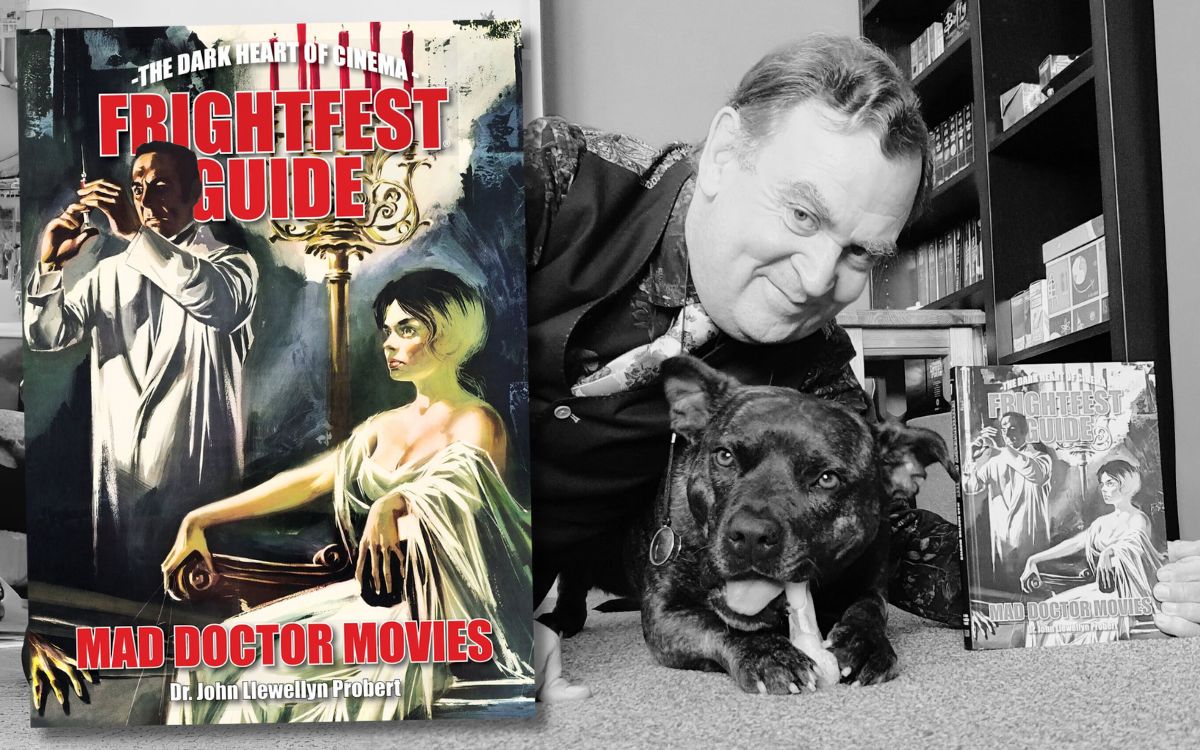
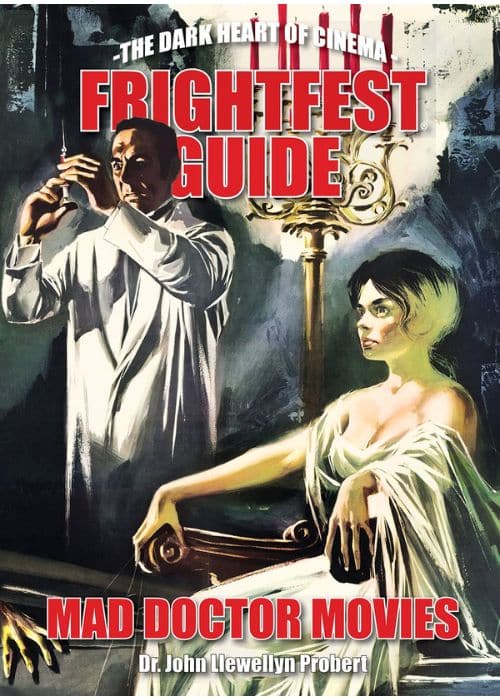
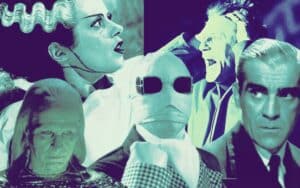
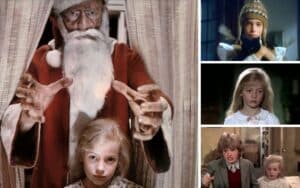



I was lucky to receive this book this week , I was surprised ‘The Asphyx’ from 1972 wasn’t included